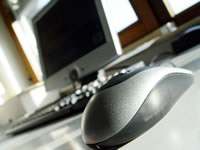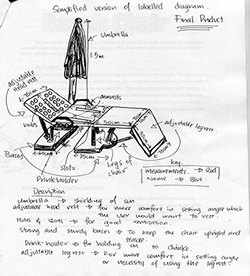Why Singapore’s English Teachers Should Embrace Singlish, Not Fight It
Is it time for Singaporean educators to embrace Singlish as a legitimate learning tool? What the Research […]
Read More
Digital technologies are changing our understanding and practice of literacy. Read on to find out what this means for teaching and learning in Singapore.
 Imagine curling up with your favourite book, engrossed as each turn of the page unfolds something new.
Imagine curling up with your favourite book, engrossed as each turn of the page unfolds something new.
Now, compare that with sitting in front of a computer, clicking your way through a maze of hyperlinks, images and videos, reading and interacting online through tagboards and discussion groups. Feels quite different, doesn’t it?
According to UK academic Gunther Kress (2003), whereas writing and the printed book used to dominate, multiple modes of representation such as visual images and audio tracks, and the media that support those multiple modes, are now taking over. These media include the Internet and other forms of information and communications technologies (ICT).
What this means is that people are increasingly communicating with each other and processing information in multiple modes, different forms, and through myriad sources.
So what are the implications of this new landscape for schools? Should our students also be learning in this kind of dynamic digital environment?
This is where digital literacy comes into play. Digital literacy is not about knowing how to use a computer, but the ability to comprehend and use information via the Internet and other digital technologies (see Lanham, 1995; Gilster, 1997, cited in Hedberg, Brudvik, Tiu, & Towndrow, 2006). In other words, it is about the content.
Closely related to this is the concept of multimodality, or the use of a variety of semiotic resources (i.e., resources of any nature which can be used for meaning making, such as linguistic, visual, aural, and more) to communicate with others and express our ideas. (See O’Halloran, 2002, cited by the Digital Curricular Literacies Team [DCLT], 2006.)
Cognisant of the increasing relevance of digital literacy and multimodality, the Centre for Research in Pedagogy and Practice (CRPP) initiated the Digital Curricular Literacies (DCL) project.
The DCL study was a suite of three interrelated research studies centring on ICT-oriented learning activities in Singapore’s classrooms. Its focus was on the teaching and learning of Science and History in Secondary 1 classrooms.
Why Science and History? According to Dr. Guo Libo, one of the project’s principal investigators, the two subjects represent “two ends of a continuum”. “A historian in the making might be very different from a scientist in the making,” says Dr. Guo, thus it would be useful to investigate how ICT is used differently for teaching and learning in these two disciplines.
Together, the study looked at different aspects of classroom practice:
DCL1: how classroom interactions are framed by teachers to prepare students to work on extended ICT learning activities.
DCL2: how students search and collect information from the Internet for their tasks.
DCL3: the types of ICT-oriented tasks teachers set for their classes, and the types of writing and semiotic resources students use for the tasks.
The studies proceeded in 3 phases, and involved 27 teachers from 7 schools in Singapore. Between August 2003 and April 2005, a total of 27 History and 68 Science lessons were observed.
First, researchers observed some lessons to get a general picture of the prevalent use of ICT in Singapore schools. The information they collected served as “baseline data”, with which comparisons could be made later. These were some of the things Dr. Guo and his colleagues observed:
After analysing the classroom observations, researchers held a series of workshops for teachers on aspects of classroom practices that they thought could be further explored. “We were trying to improve pedagogic practice and student learning in terms of ICT use, in terms of disciplinarity, and in terms of multimodality,” says Dr. Guo.
The research team was particularly concerned about how students often used information from the Internet in a “wholesale”, unquestioning manner, which goes against the grain of authentic learning. “There must be some purpose, conscious awareness of why they [students] are searching for this piece of information. There must be some critical thinking involved in the online search,” which according to Dr. Guo, were rarely observed in the baseline data. Instead, cut-and-paste and mass-lifting of information from the Web were the norm.
The clarity, or lack thereof, of teachers’ instructions was another concern. “Sometimes the task was given in an ambiguous way, but the teacher apparently did not realise this might be a potential problem, and as a result, students responded to this task in various ways.” This in turn translated into different grades. The quality of student work could be improved with better scaffolding or support by the teacher.
With these in mind, the project team first introduced key ideas such as multimodality and task design to teachers, and explained why they are important to students’ learning. They discussed how these concepts can be applied specifically to the teaching and learning of History and Science.
After the workshops, researchers once again returned to the classrooms, this time to observe whether and how teachers would translate the ideas discussed into actual practice.
They observed “a big jump” in the number of open-ended tasks, allowing for multiple strategies and outcomes. According to Dr. Guo, multiple-choice worksheets were very common in the first phase, but after the workshops, they saw more tasks that gave students greater leeway for different approaches and ideas.
For example, in a Science class that was learning about force and pressure, the teacher told students to think of themselves as groups of designers who had been tasked to design beach chairs for a resort.
 In designing the chairs, they had to take into account conditions such as how portable and comfortable the chairs would be, the climate, and even the condition of the ground on which the resort was built. They also had to pitch their designs to the resort “owners” (another group of students) (DCLT, 2006).
In designing the chairs, they had to take into account conditions such as how portable and comfortable the chairs would be, the climate, and even the condition of the ground on which the resort was built. They also had to pitch their designs to the resort “owners” (another group of students) (DCLT, 2006).
“It’s not that this kind of multiple-strategies [tasks] is necessarily better than multiple choice,” says Dr. Guo, but that at some point a mix of both would do the students good. Such an activity lets them apply various types of knowledge and represent their work in multiple modes (DCLT, 2006), as attested to by the sketches, 3D models and presentations they produced.
Other encouraging changes were also observed, including the significant reduction in the width and number of searches on the Internet by students, suggesting that search strategies were better thought out; and stronger scaffolding by teachers to aid students in their ICT tasks. Students were also using other semiotic resources slightly more in their work.
As a researcher, this project was significant to Dr. Guo as it sought not only to describe and document, but also to bring about positive changes in the classrooms by having teachers and researchers work hand in hand.
He believes that the more intensive the collaboration, the greater the benefit to the teachers, and eventually the students. “Work with the teachers on their concerns, share your ideas and perspectives with them and see whether this researcher-teacher collaboration improves students’ projects and products,” he says.
References
Digital Curricular Literacies Team. (2006). Analysing student artefacts (Unpublished final technical report). Singapore: National Institute of Education, Centre for Research in Pedagogy and Practice.
Hedberg, J. G., Brudvik, O. C., Tiu, A. L. T., & Towndrow, P. A. (2006). Lower high-school students’ approaches to finding, evaluating and using web resources in history and science tasks. (Research Report Series No. 06-004). Retrieved November 14, 2006, from https://repository.nie.edu.sg/jspui/handle/10497/218
Kress, G. (2003). Literacy in the new media age. London: Routledge.